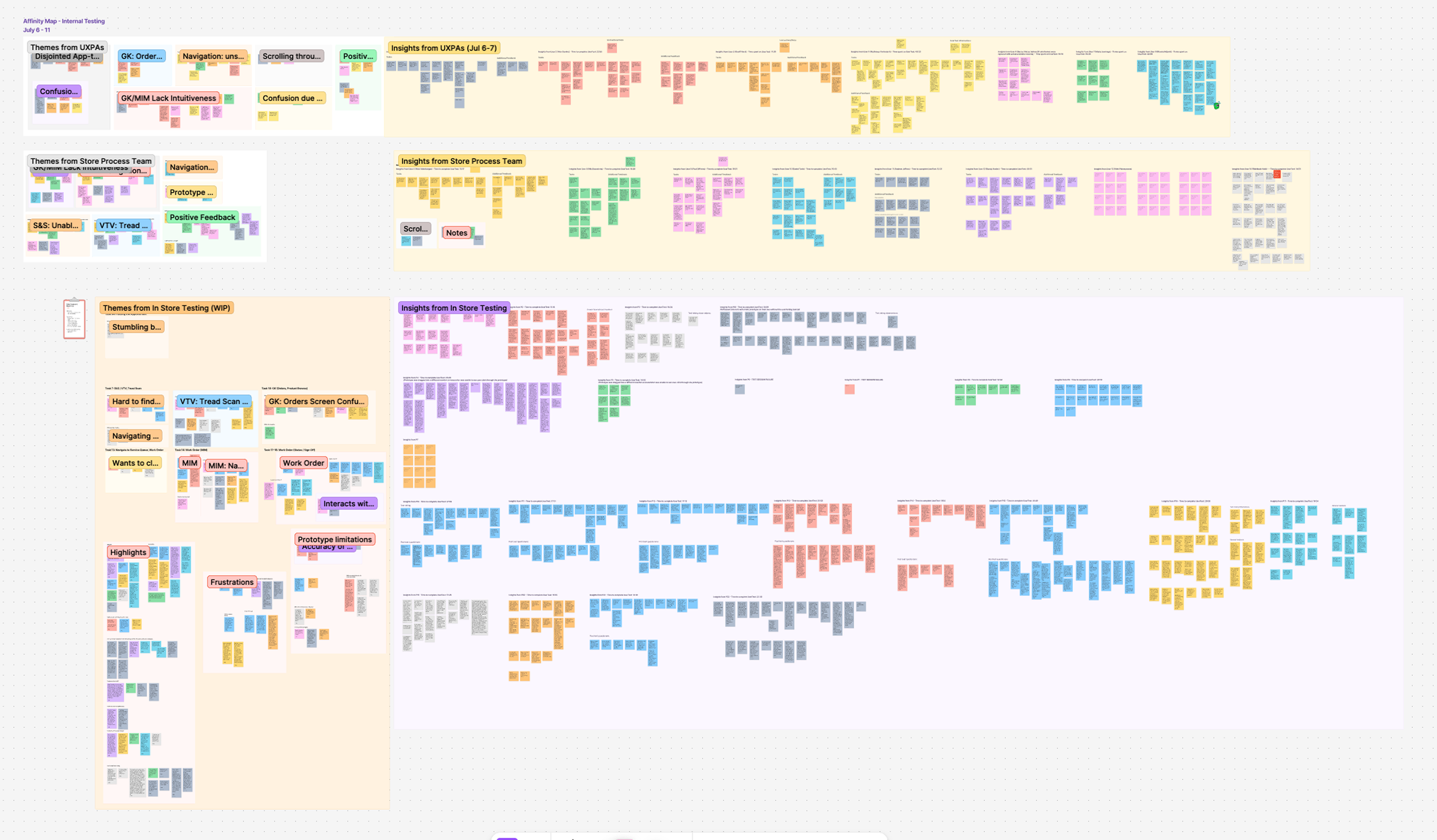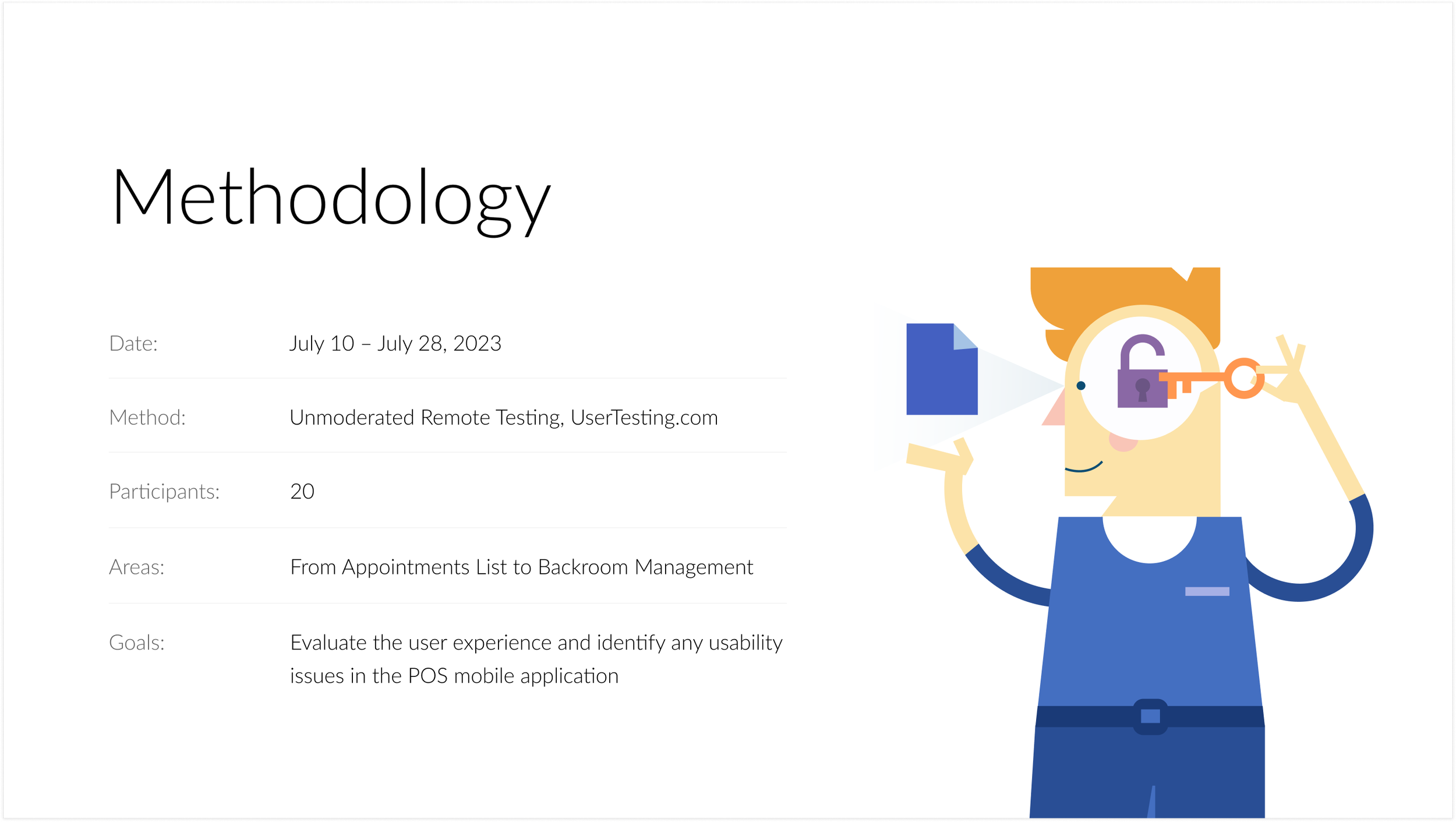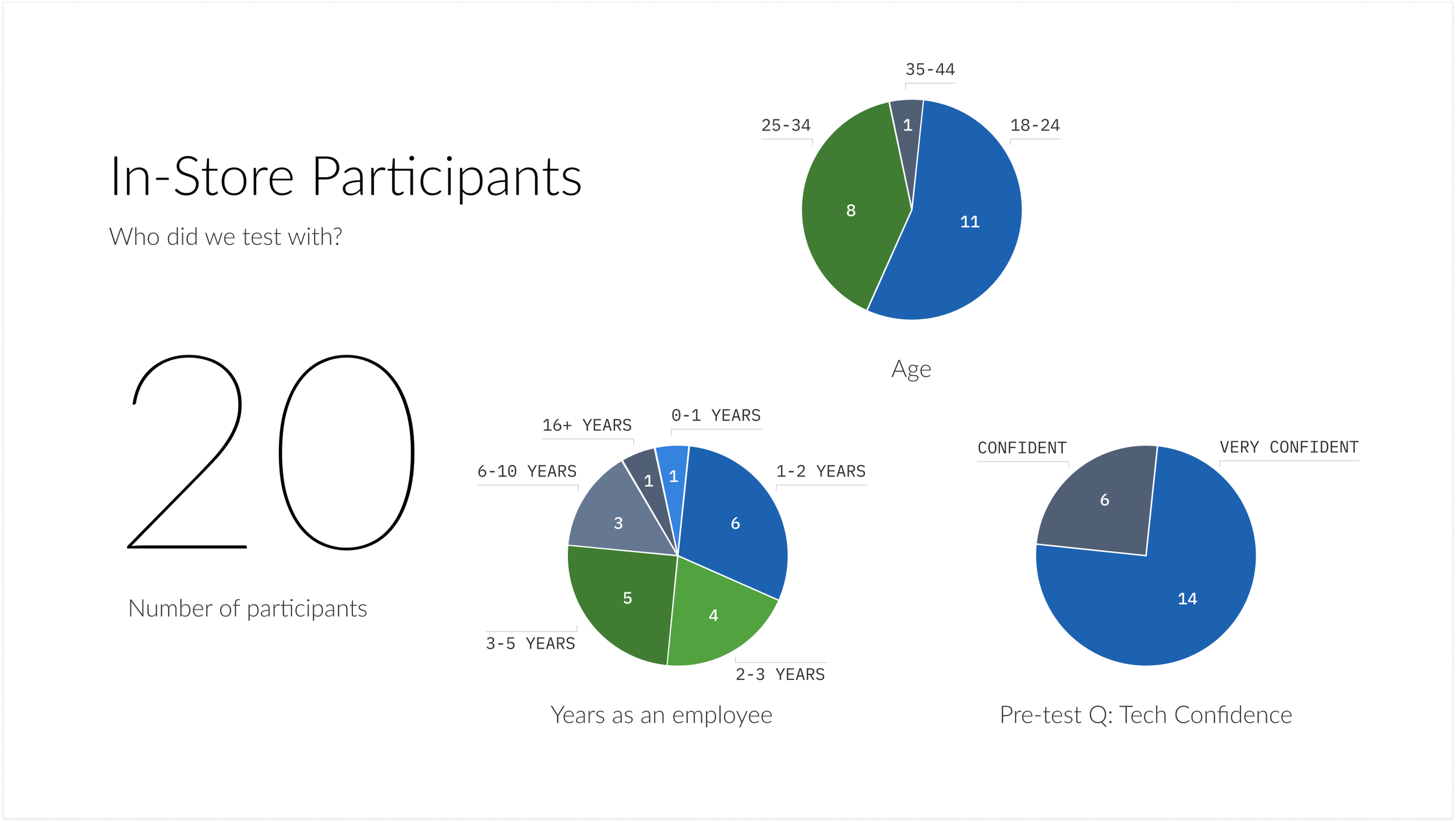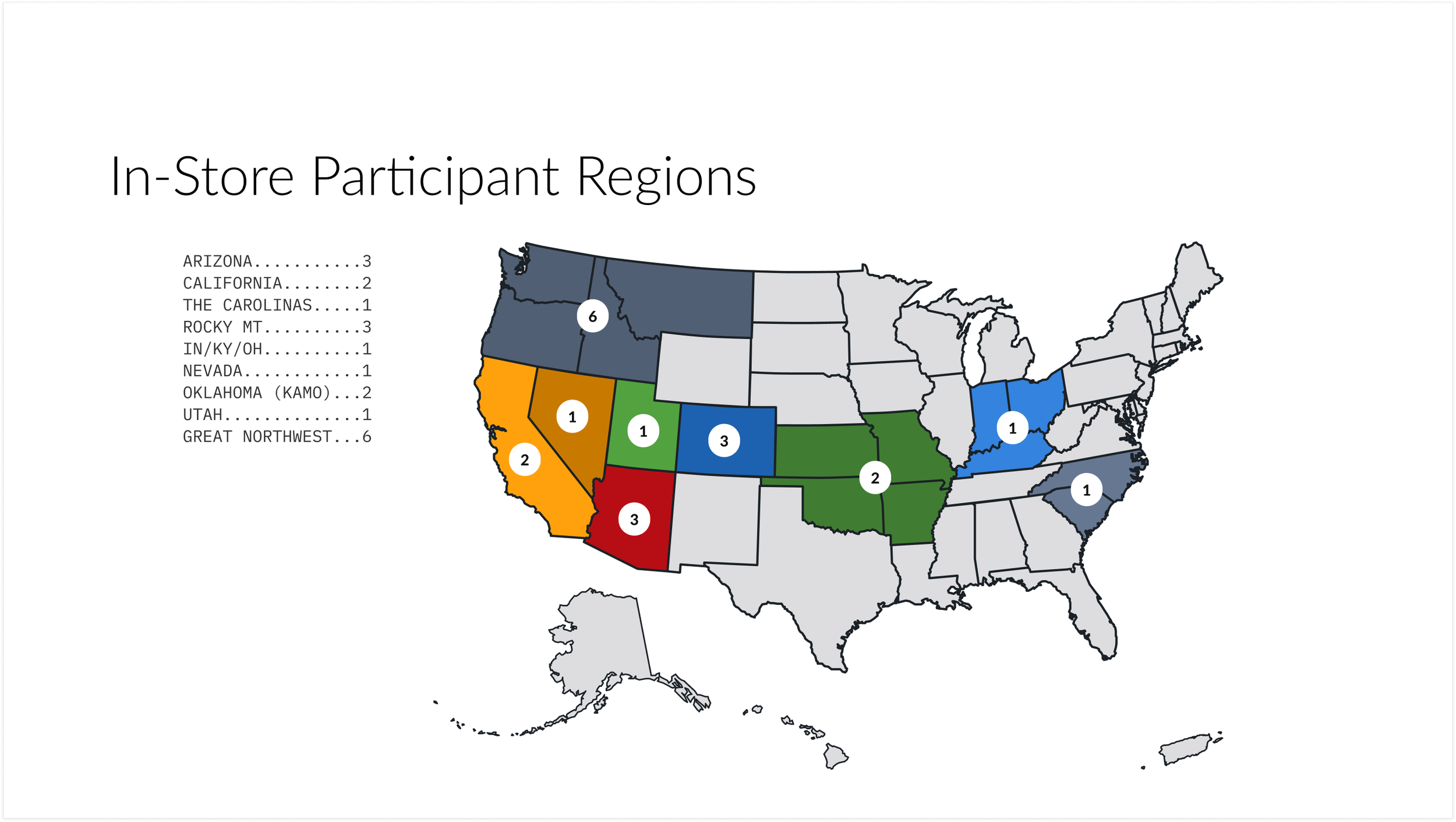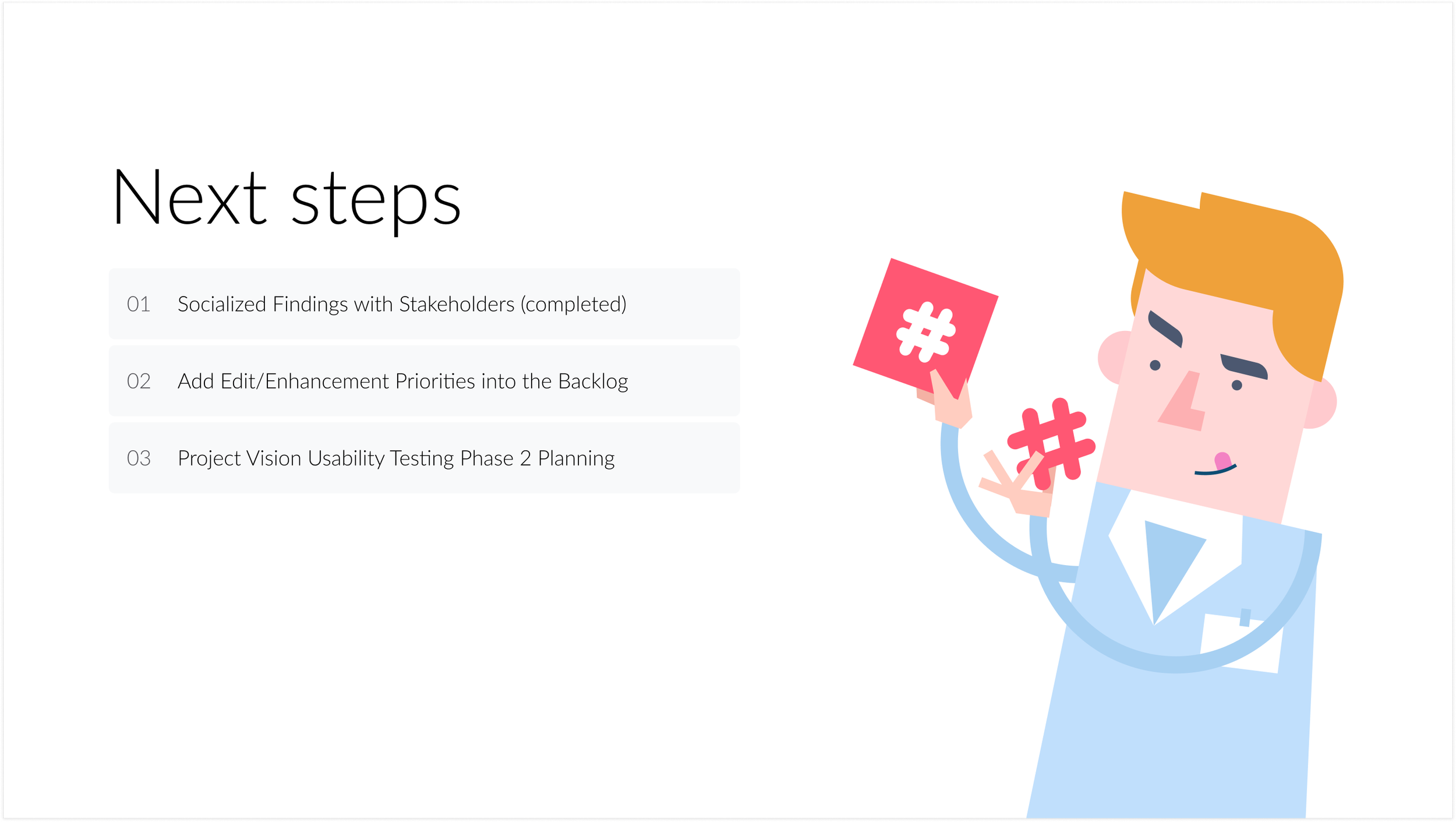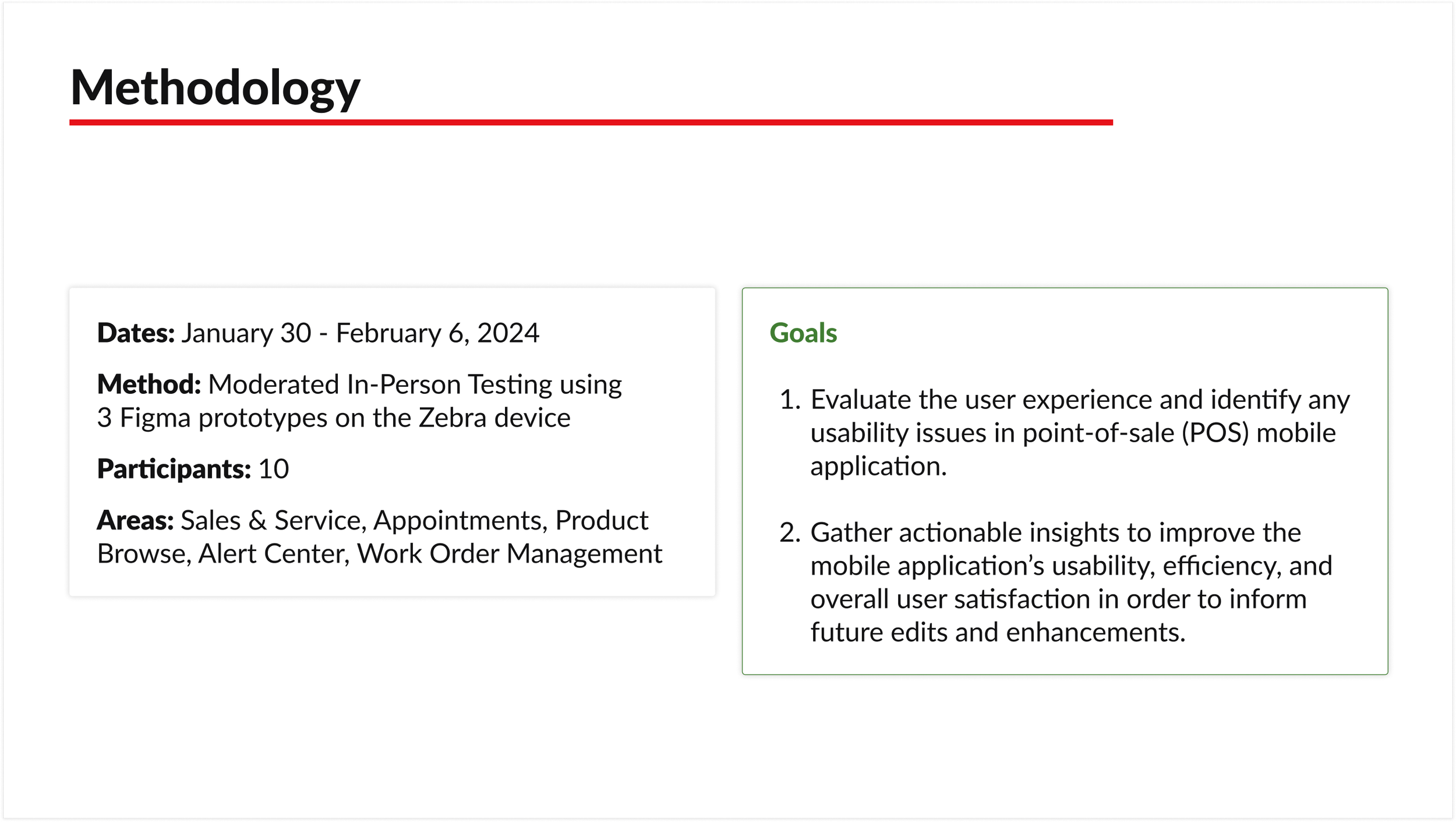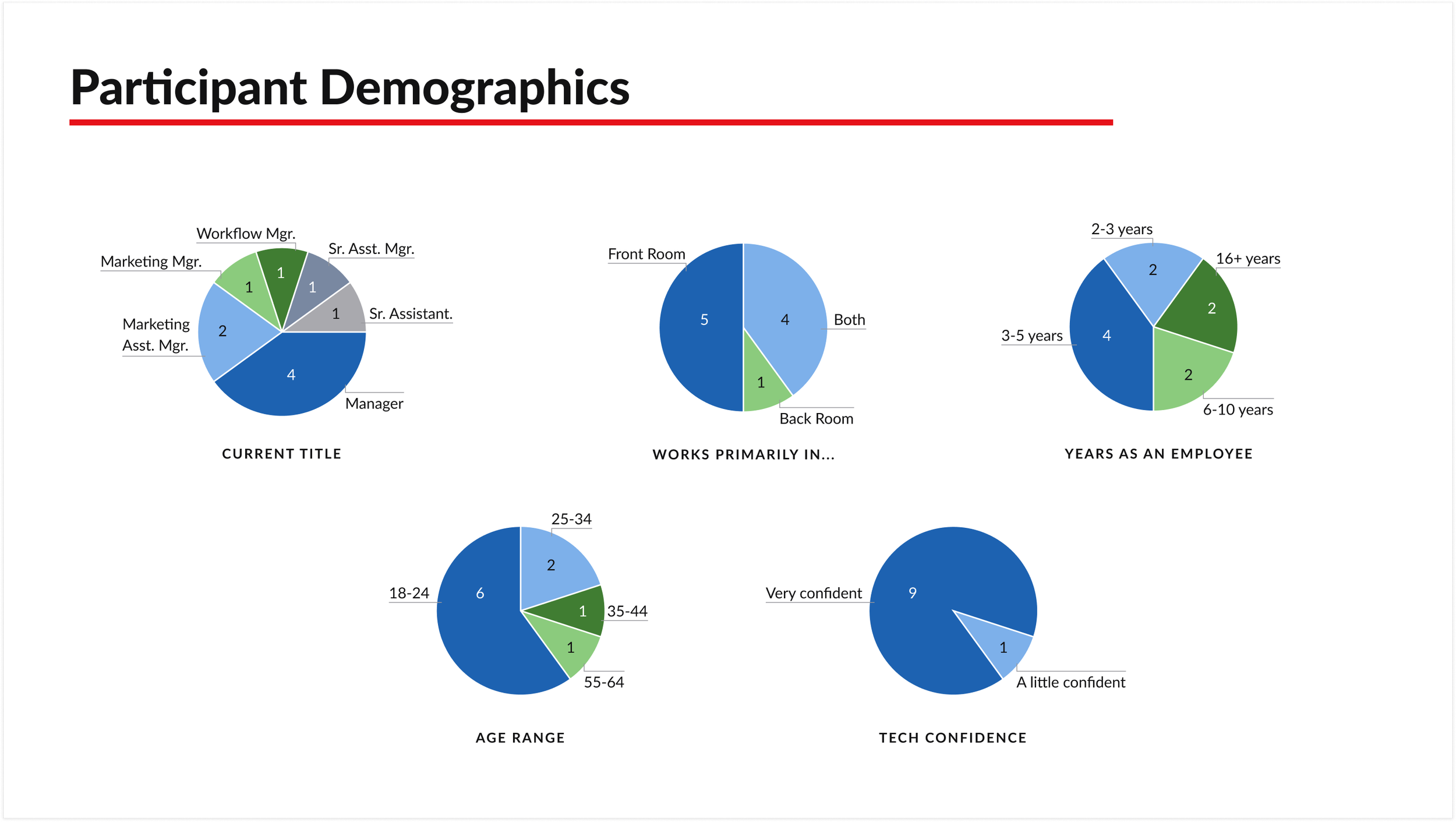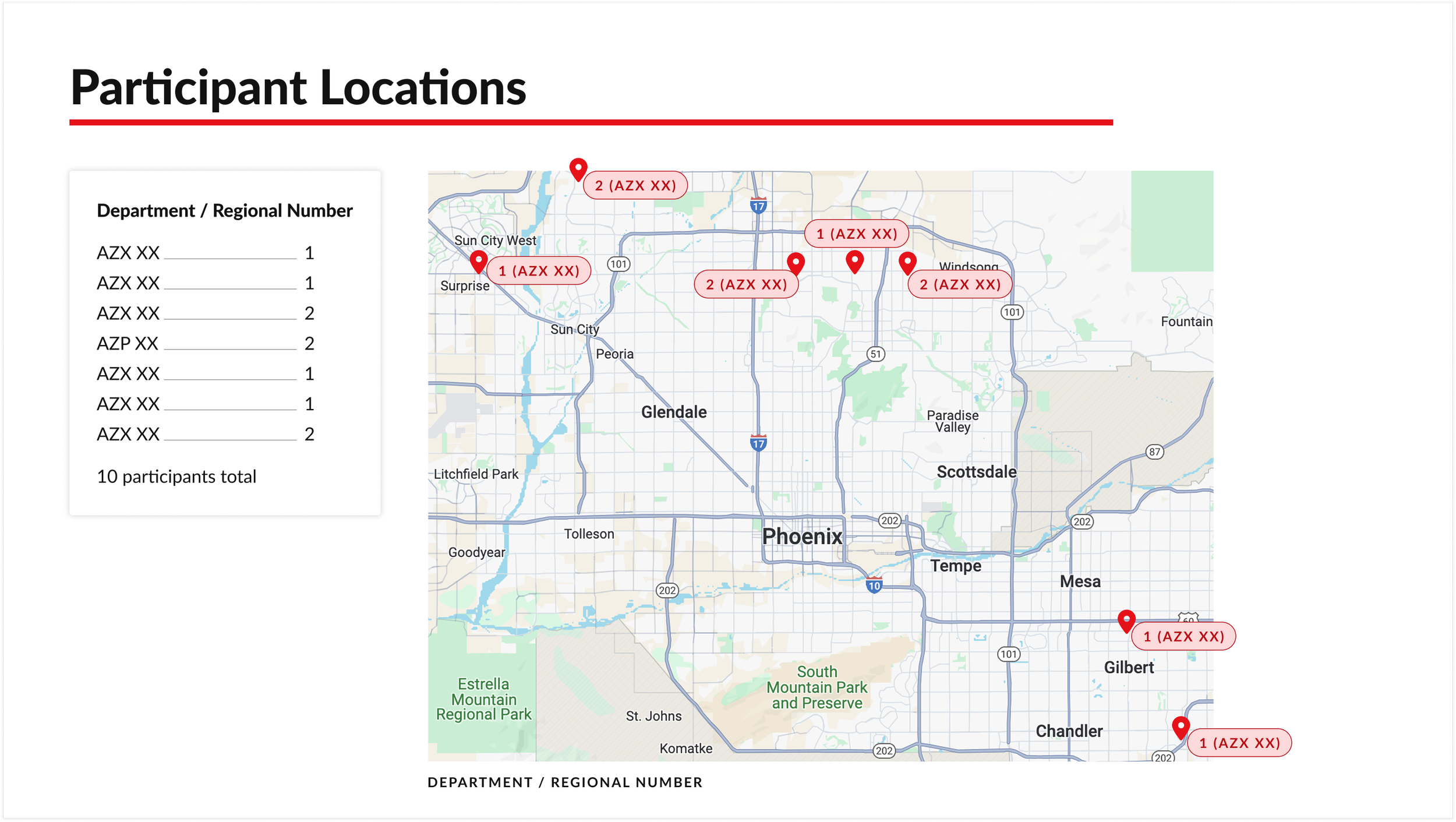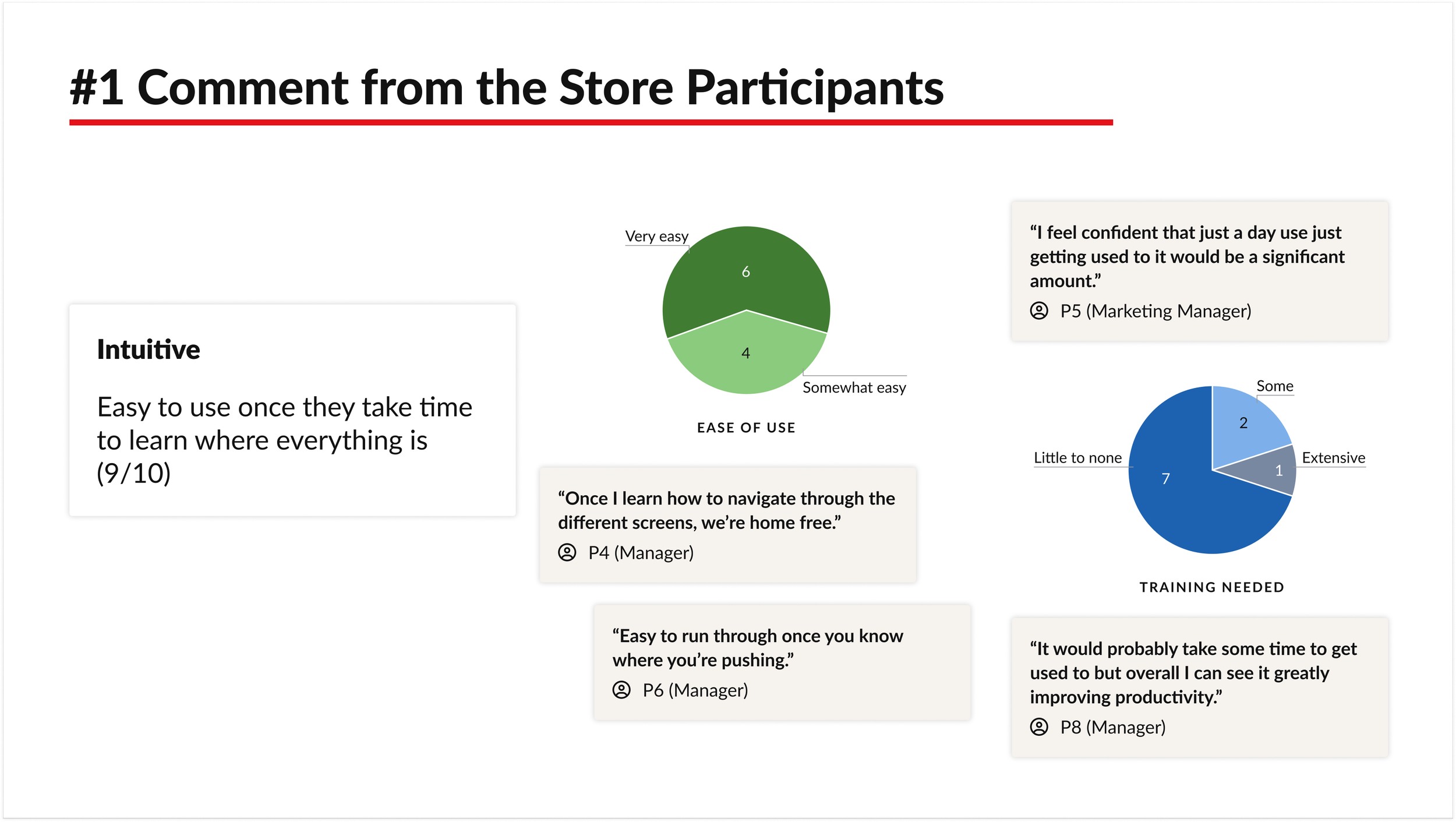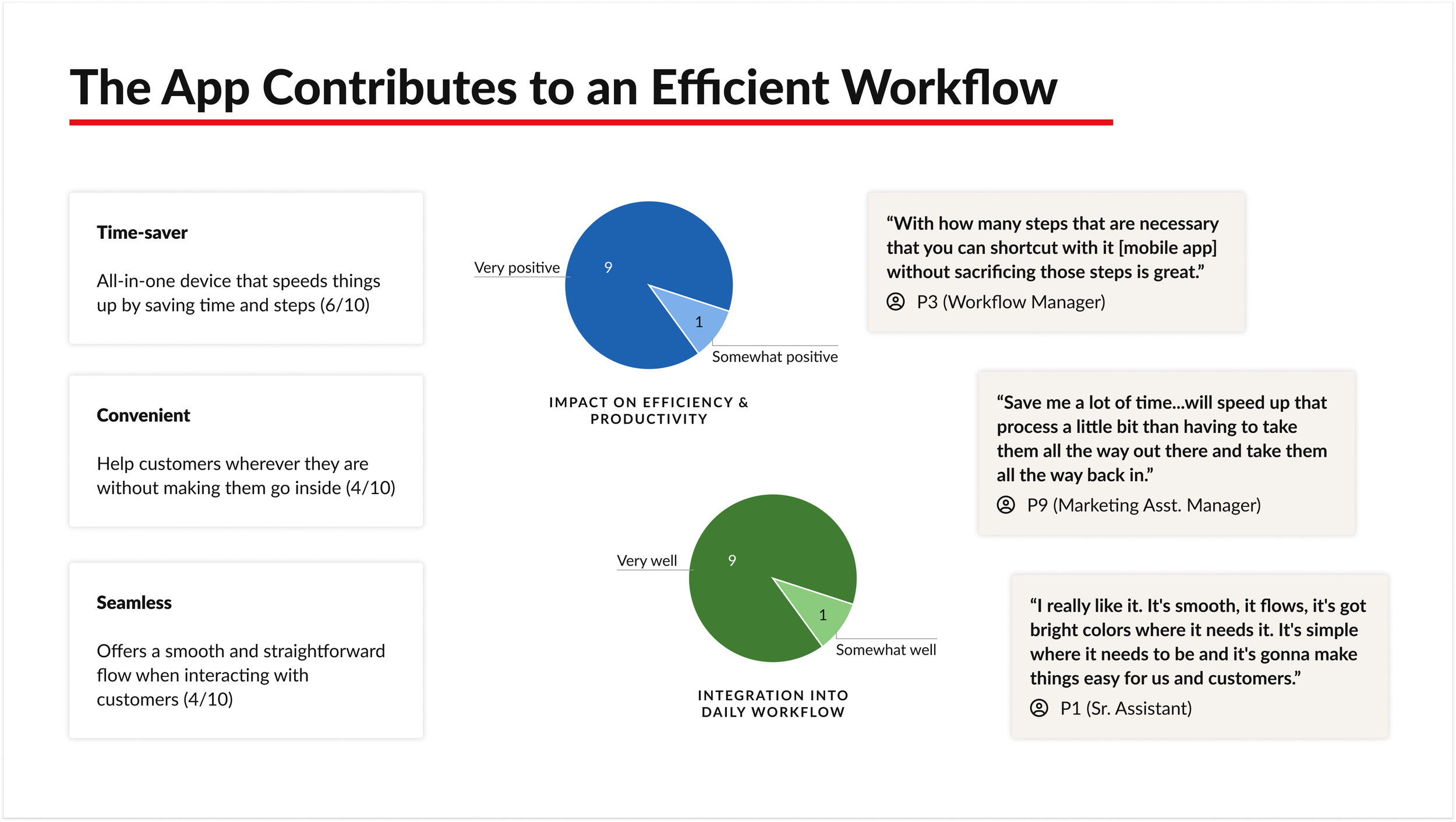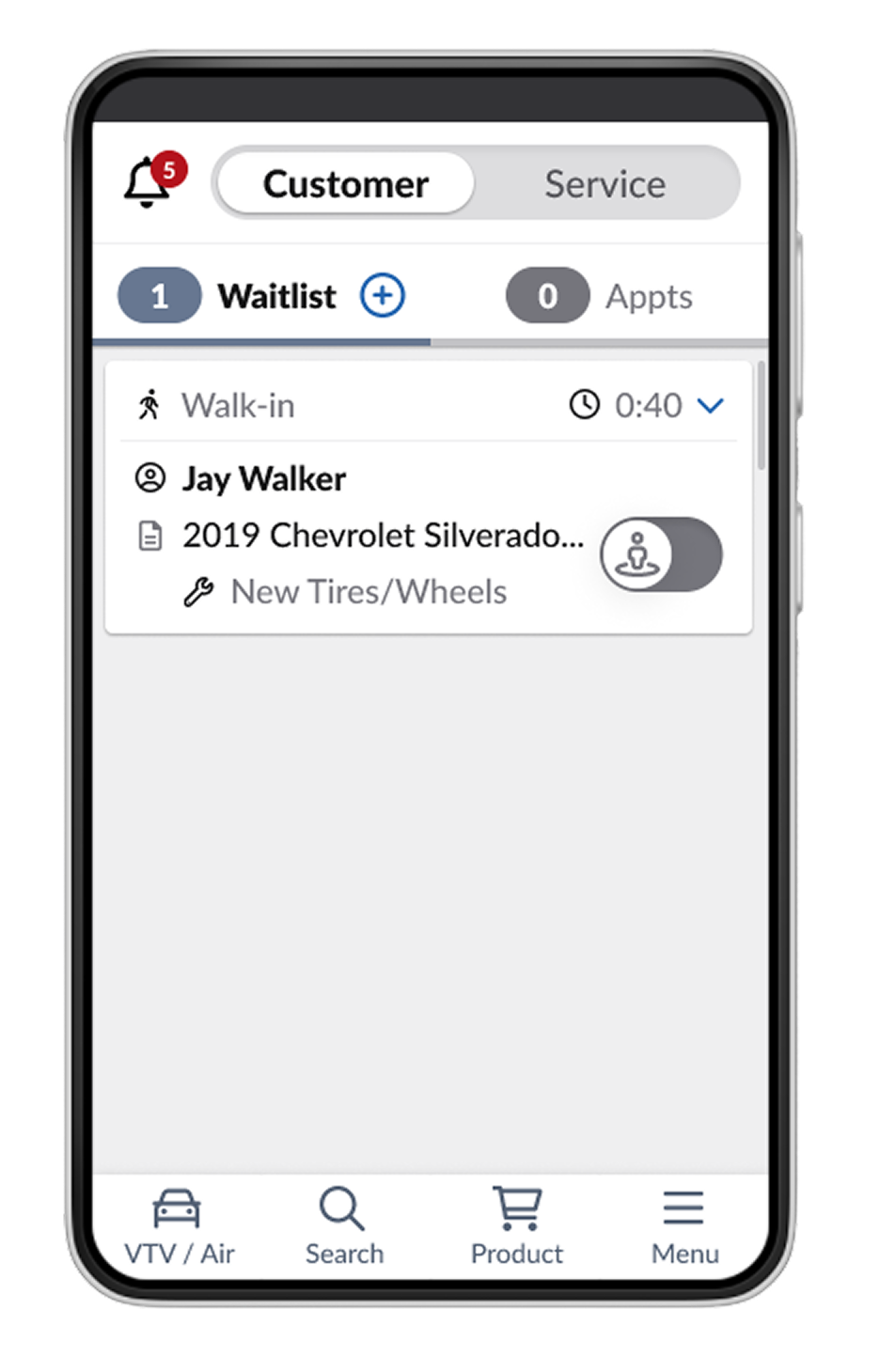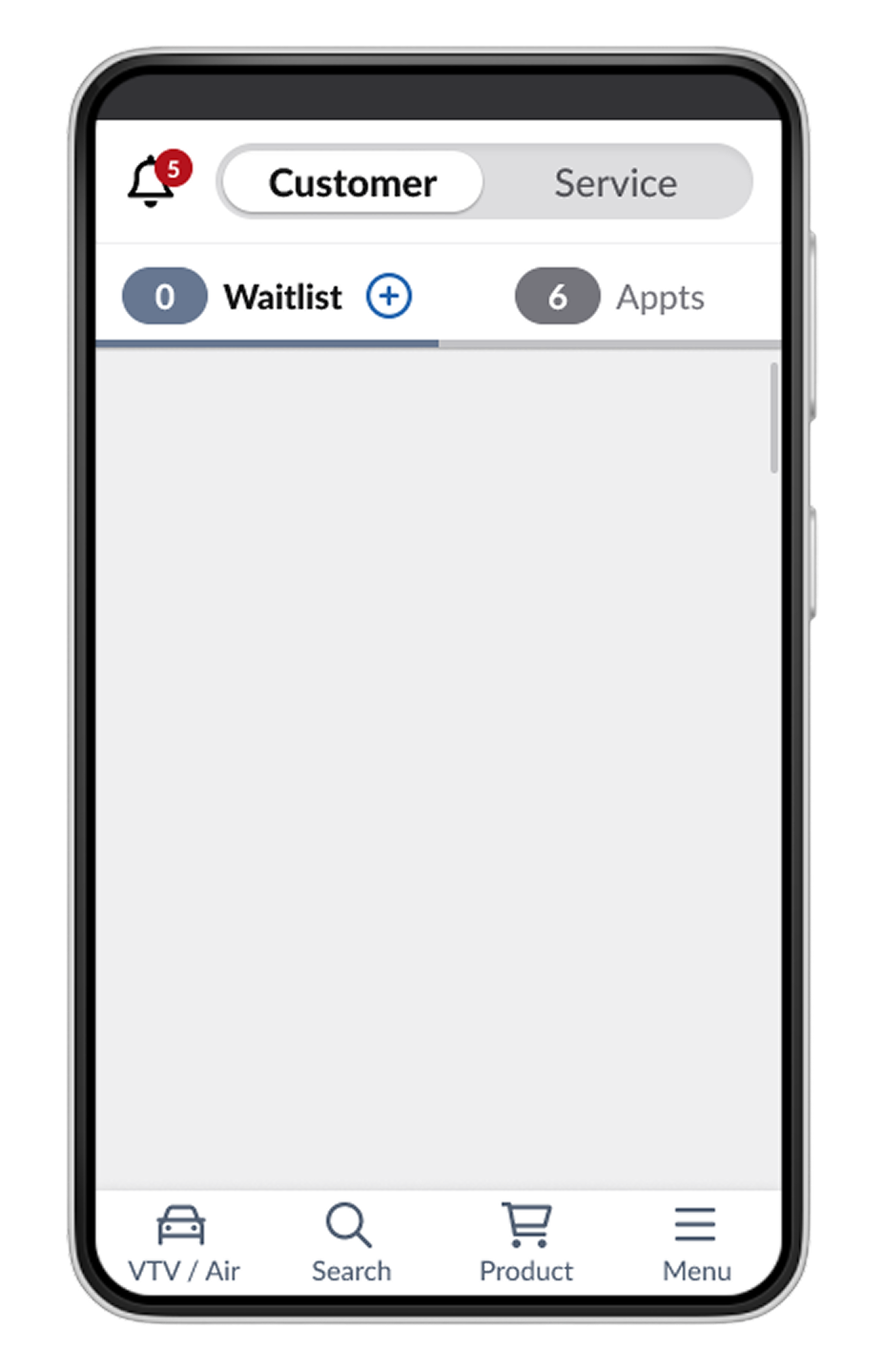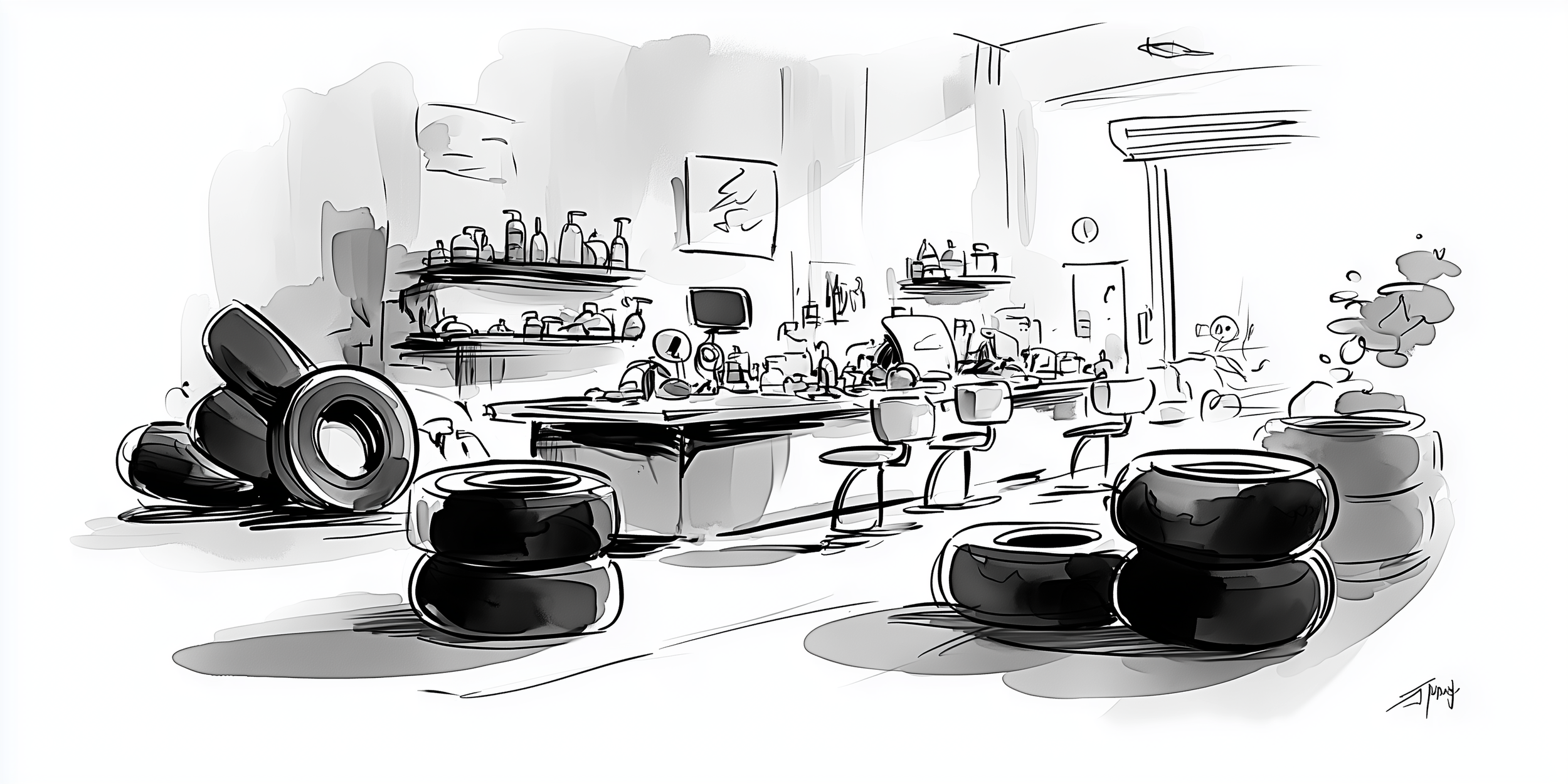
Mobile POS Usability Testing
Project Summary
To reduce risk and ensure adoption of a new mobile point-of-sale (POS) system, I led two phases of usability testing prior to development. These studies validated critical workflows, uncovered usability issues, and informed design refinements that directly shaped what was built.
I managed a team of four designers, collaborating with stakeholders and store associates to test concepts early, refine prototypes, and hand off validated designs to development.
Problem
The new mobile POS was intended to replace fragmented desktop processes with a unified mobile experience.
This shift carried risks:
Complexity
Associates needed to complete multi-step workflows (appointments, inspections, bay assignment, work orders) on the go
Adoption Risk
Without early validation, unclear navigation or task flows could have been baked into development, leading to rework or resistance
Business Confidence
Leadership needed evidence that the design direction would work in real stores before committing to build

Approach
We took an iterative, two-phase research approach embedded in pre-development design:
Phase 1 focused on early discovery
Used semi-unmoderated and unmoderated remote sessions
Tested mid-fidelity prototypes with both corporate team members and store associates across multiple regions
Allowed us to quickly identify blockers in core workflows such as appointments, service queue, in-bay processes, and work orders, and refine designs before investing further
Phase 2 focused on advanced validation
With refinements in place, we conducted moderated in-person testing on handheld devices with store associates and leaders
This phase simulated real-world conditions and evaluated complex workflows like product validation, pull list, and alert center
Outcome
These phases uncovered issues early, validated solutions in context, and ensured the mobile experience was development-ready
Together, they caught problems upfront, confirmed refinements, and enabled a confident build
The two phases surfaced issues early and validated fixes, ensuring a mobile experience ready for adoption
Phase 1
Usability Testing
Early Testing (Corporate + In-Store)
Method: Semi-unmoderated and unmoderated remote testing
Participants: 27 total — corporate team members and store associates across multiple regions
Workflows Tested: Appointments, service queue, in-bay processes, work orders, and product validation
Goal: Identify usability blockers and refine the prototype prior to advanced testing
Key Findings
Overlapping terminology caused confusion (Queue vs. In Bay)
Expand/collapse card patterns were not intuitive
Buy-Online-Pick-Up-In-Store (BOPIS) order flow was unclear, leading to task failures
Positive sentiment for consolidated workflows: “Everything in one place, not overwhelming”
Impact:
Recommended edits/enhancements were added to the dev backlog including:
Adjusted bottom navigation and bay assignment interactions
Refined modals and CTA hierarchy (e.g., Add to Bay, Bay Out)
Updated visual clarity for BOPIS flows
Findings were socialized with stakeholders
Learnings were applied to Usability Testing Phase 2 Planning
Phase 2
Usability Testing
Advanced Validation
(In-Person, Handheld Devices)
Method: Moderated in-person testing using the actual mobile hardware
Participants: 10 store leaders and associates representing multiple regional groups
Workflows Tested: Advanced scenarios including notifications, alert center, pull list, and integrated work order updates
Goal: Validate Phase 1 refinements and test complex flows in realistic, device-based conditions
Scenarios Tested:
Unplanned Purchase: Tire replacement and appointment creation
Planned Pickup: BOPIS order fulfillment and product pull
Unplanned Service: Aircheck leading to repair and service completion
Key Findings:
Participants instinctively started with Aircheck/VTV, showing continuity with existing habits
Alert Center and Pull List were under-discovered, highlighting training and design opportunities
Product Browse, appointment, and work order flows tested as smooth and intuitive
Sentiment: “Intuitive, time-saving, and seamless once you learn it.”
Clickable Prototypes
(links below images)
Impact
Pre-Development Impact
Conducting usability testing before development ensured the system was designed right the first time:
Blocked rework: Usability issues were fixed before code was written, saving cost and time downstream
Validated flows: Complex scenarios tested successfully in context, reducing risk of missed requirements
Efficiency gains: Navigation errors decreased and task completion times improved between phases
Confidence to build: Leadership had evidence that designs were development-ready and aligned with associate workflows
Results
Reduced errors and smoother task success rates across workflows
90%+ participants rated the mobile POS as intuitive, convenient, and time-saving
Designs moved into development validated, refined, and adoption-ready
Reflection
By embedding usability testing in pre-development design, I prevented costly rework and ensured the product was built on validated workflows. Leading this initiative highlighted my ability to:
Direct research and synthesis for complex, enterprise workflows
Translate findings into actionable design improvements
Deliver validated designs that were ready for development handoff

